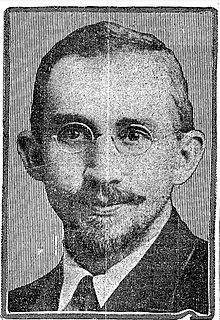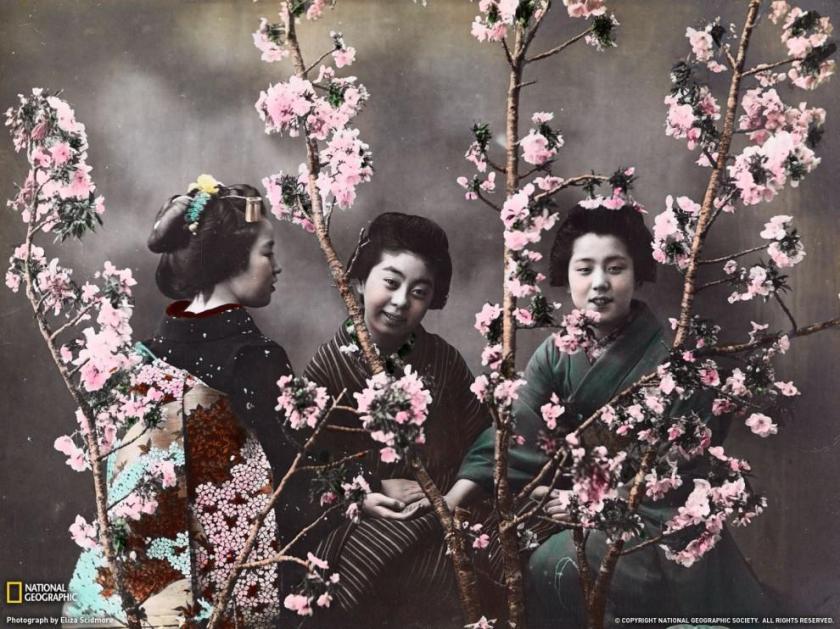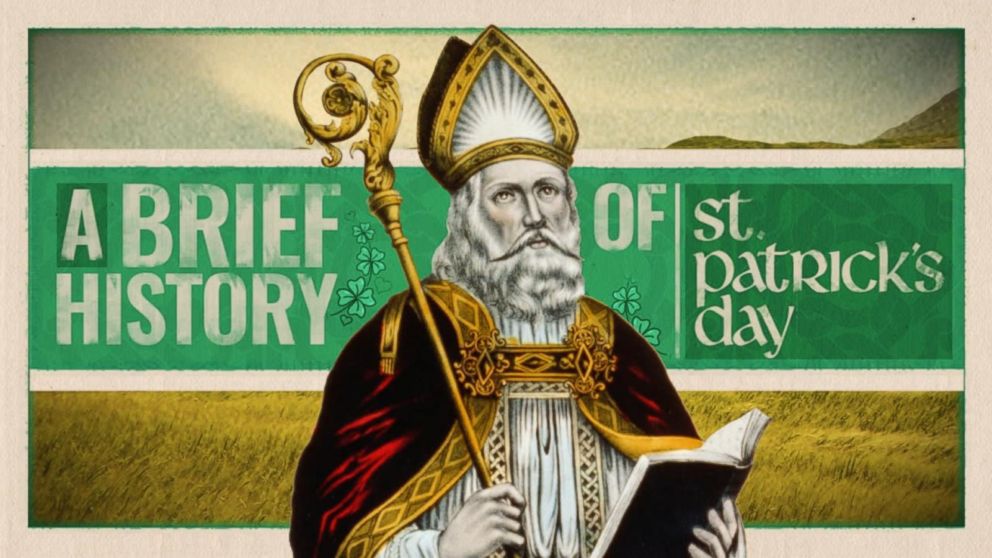Since the late 19th century, the area now known as Laos, Cambodia and Vietnam was governed as a French Colonial territory. “French Indo-China” came to be occupied by the Imperial Japanese after the fall of France, at the onset of WWII. There arose a nationalist-communist army during this period, dedicated to throwing out the Japanese occupier. It called itself the “League for the Independence of Vietnam”, or “Viet Minh”.
 France re-occupied the region following the Japanese defeat which ended World War 2, but soon faced the same opposition from the army of Ho Chi Minh and Vo Nguyen Giap.
France re-occupied the region following the Japanese defeat which ended World War 2, but soon faced the same opposition from the army of Ho Chi Minh and Vo Nguyen Giap.
What began as a low level rural insurgency, later became a full-scale modern war when Communist China entered the fray in 1949.
The disastrous defeat of French forces at Dien Bien Phu in 1953 led to French withdrawal from Vietnam, the Geneva Convention partitioning the country into the communist “Democratic Republic of Vietnam” in the north, and the State of Vietnam in the south led by Emperor Bao Dai and Prime Minister Ngo Dinh Diem.
Communist forces of the north continued to terrorize Vietnamese patriots in north and south alike, with aid and support from communist China and the Soviet Union.
The student of history understands that nothing happens in a vacuum. US foreign policy is no exception. International Communism had attempted to assert itself since the Paris Commune rebellion of 1871, and found its first major success with the collapse of czarist Russia in 1917.
 US policy makers feared a “domino” effect, and with good cause. The 15 core nations of the Soviet bloc were soon followed by Eastern Europe, as Poland, Bulgaria, Romania, Hungary and Czechoslovakia fell each in their turn, into the Soviet sphere of influence. Germany was partitioned into Communist and free-enterprise spheres after WWII, followed by China, North Korea and on across Southeast Asia.
US policy makers feared a “domino” effect, and with good cause. The 15 core nations of the Soviet bloc were soon followed by Eastern Europe, as Poland, Bulgaria, Romania, Hungary and Czechoslovakia fell each in their turn, into the Soviet sphere of influence. Germany was partitioned into Communist and free-enterprise spheres after WWII, followed by China, North Korea and on across Southeast Asia.
Communism is no benign ideology, morally equivalent to the free market west. Current estimates of citizens murdered by Communist party ideology in the Soviet Union alone, range from 8 to 61 million during the Stalinist period.
Agree or disagree with policy makers of the time that’s your business, but theirs was a logical thought process. US aid and support for South Vietnam increased as a way to “stem the tide” of international communism, at the same time that French support was pulling back. By the late 1950s, the US was sending technical and financial aid in expectation of social and land reform. By 1960, the “National Front for the Liberation of South Vietnam” (“NLF”, or “Viet Cong”) had taken to murdering Diem supported village leaders. JFK responded by sending 1,364 American advisers into South Vietnam, in 1961. The war in Vietnam pitted as many as 1.8 million allied forces from South Vietnam, the United States, Thailand, Australia, the Philippines, Spain, South Korea and New Zealand, against about a half million from North Vietnam, China, the Soviet Union and North Korea. Begun on November 1, 1955, the conflict lasted 19 years, 5 months and a day. On March 29, 1973, two months after signing the Paris Peace accords, the last US combat troops left South Vietnam as Hanoi freed the remaining POWs held in North Vietnam.
The war in Vietnam pitted as many as 1.8 million allied forces from South Vietnam, the United States, Thailand, Australia, the Philippines, Spain, South Korea and New Zealand, against about a half million from North Vietnam, China, the Soviet Union and North Korea. Begun on November 1, 1955, the conflict lasted 19 years, 5 months and a day. On March 29, 1973, two months after signing the Paris Peace accords, the last US combat troops left South Vietnam as Hanoi freed the remaining POWs held in North Vietnam.
 Even then it wasn’t over. Communist forces violated cease-fire agreements before they were even signed. Some 7,000 US civilian Department of Defense employees stayed behind to aid South Vietnam in conducting an ongoing and ultimately futile war against communist North Vietnam.
Even then it wasn’t over. Communist forces violated cease-fire agreements before they were even signed. Some 7,000 US civilian Department of Defense employees stayed behind to aid South Vietnam in conducting an ongoing and ultimately futile war against communist North Vietnam.
The last, humiliating scenes of the war played themselves out on the roof of the US Embassy in Saigon on April 29 – 30, 1975, as those able to escape boarded helicopters, while communist forces closed around the South Vietnamese capital.
The “Killing Fields” of Cambodia followed between 1975 – ‘79, when the “Khmer Rouge”, self-described as “The one authentic people capable of building true communism”, murdered or caused the deaths of an estimated 1.4 to 2.2 million of their own people, out of a population of 7 million. All to build the perfect, agrarian, “Worker’s Paradise”.
 Imagine feeling so desperate, so fearful of the alien ideology invading your country, that you convert all your worldly possessions and those of your family into a single diamond, and bite down on that stone so hard it embeds in your shattered teeth. Forced to flee for your life and those of your young ones, you take to the open ocean in a small boat. All in the faint and desperate hope, of getting out of that place.
Imagine feeling so desperate, so fearful of the alien ideology invading your country, that you convert all your worldly possessions and those of your family into a single diamond, and bite down on that stone so hard it embeds in your shattered teeth. Forced to flee for your life and those of your young ones, you take to the open ocean in a small boat. All in the faint and desperate hope, of getting out of that place.
That is but one story among more than three million “boat people”. Three million from a combined population of 56 million, fleeing the Communist onslaught in hopes of temporary asylum in other countries in Southeast Asia or China.
They were the Sino-Vietnamese Hoa, and Cambodians fleeing the Khmer Rouge. Ethnic Laotians, Iu Mien, Hmong and other highland peoples of Laos. The 30 or so Degar (Montagnard) tribes of the Central Highlands, so many of whom had been our steadfast allies in the late war. Over 2.5 million of them were resettled, more than half to the United States. The other half went mostly to Canada, Europe and South Pacific nations.
A half-million were repatriated, voluntarily or involuntarily. Hundreds of thousands vanished in the attempt to flee, never to be seen again. The humanitarian disaster that was the Indochina refugee crisis was particularly acute between 1979 – ’80, but reverberations continued into the 21st century.
The humanitarian disaster that was the Indochina refugee crisis was particularly acute between 1979 – ’80, but reverberations continued into the 21st century.
Graduating UMass Lowell in 1972 with a degree in nuclear engineering, John Ogonowski joined the United States Air Force. During the war in Vietnam. The pilot would ferry equipment from Charleston, SC to Southeast Asia, sometimes returning with the bodies of the fallen aboard his C-141 transport aircraft.
Today, we remember him as Senior Captain on American Airlines flight 11, one of thousands murdered by Islamist terrorists, on September 11, 2001. When he wasn’t flying jumbo jets, John Ogonowski was a farmer. Until he was killed in his cockpit, John mentored Cambodian refugees turned farmers on his Dracut, Massachusetts “White Gate Farm“, helping them grow familiar crops, in an unfamiliar climate. Just as those old Yankee farmers had once mentored his Polish immigrant ancestors, generations before.

Military Working Dogs (MWDs) served with every service branch in Vietnam, mostly German Shepherds and Dobermans but many breeds were accepted into service.
It is estimated that 4,900 dogs served between 1964 and 1975. Detailed records were kept only after 1968, documenting 3,747.
A scant 204 dogs ever left during the ten-year period. Some remained in the Pacific while others returned to the United States. Not one ever returned to civil life. An estimated 350 dogs were killed in action as were 263 handlers. Many more were wounded. As to the rest, many were euthanized, or left with ARVN units, or simply abandoned, as “surplus equipment”.
There would be no war dog adoption law until 2000 when WWII Marine War Dog Platoon Leader and Veterinarian Dr. William Putney made it happen, with assistance from Congressman Roscoe Bartlett of Maryland.
The day it opened in 1982 there were 57,939 names inscribed on the Vietnam Memorial Wall, Over the years, the names of military personnel who succumbed to wounds sustained in the war, were added to the wall. As of Memorial Day 2015, there are 58,307.
 In the end, US public opinion would not sustain what too many saw as an endless war in Vietnam. We feel the political repercussions, to this day. I was ten at the time of the Tet Offensive in 1968. Even then I remember the searing sense of disgrace and humiliation, at the behavior of some of my fellow Americans.
In the end, US public opinion would not sustain what too many saw as an endless war in Vietnam. We feel the political repercussions, to this day. I was ten at the time of the Tet Offensive in 1968. Even then I remember the searing sense of disgrace and humiliation, at the behavior of some of my fellow Americans.
 In 2012, President Barack Obama declared a one-time occasion proclaiming March 29 National Vietnam War Veterans Day and calling on “all Americans to observe this day with appropriate programs, ceremonies, and activities.”
In 2012, President Barack Obama declared a one-time occasion proclaiming March 29 National Vietnam War Veterans Day and calling on “all Americans to observe this day with appropriate programs, ceremonies, and activities.”
In 2017, Senator Pat Toomey (R-PA) and Joe Donnelly (D-IN) co-sponsored a measure to declare March 29 Vietnam Veterans Day from that day forward, to honor US service members who served in the war in southeast Asia. The measure passed the United States Senate on February 3 and the House of Representatives on March 21. President Donald Trump signed the measure into law on March 28 designating the following day and every March 29 henceforward, Vietnam Veteran’s Day.
The recognition and gratitude due those who served in an unpopular war, was long overdue









 President Woodrow Wilson stayed his hand, winning re-election the following year with the slogan, “He Kept Us Out of War”.
President Woodrow Wilson stayed his hand, winning re-election the following year with the slogan, “He Kept Us Out of War”.

 Frequent visits with her brother led to a passionate interest in all things Japanese, most especially the Japanese cherry, Prunus serrulata, commonly known as the Sakura. The Japanese blossoming cherry tree. She called them “the most beautiful thing in the world”.
Frequent visits with her brother led to a passionate interest in all things Japanese, most especially the Japanese cherry, Prunus serrulata, commonly known as the Sakura. The Japanese blossoming cherry tree. She called them “the most beautiful thing in the world”.
 On March 27, 1912, the Viscountess Chinda, wife of the Japanese ambassador to the United States joined First Lady Helen Taft, in planting two Japanese Yoshino cherry trees on the bank of the Potomac River, near the Jefferson memorial.
On March 27, 1912, the Viscountess Chinda, wife of the Japanese ambassador to the United States joined First Lady Helen Taft, in planting two Japanese Yoshino cherry trees on the bank of the Potomac River, near the Jefferson memorial.


 Dad called the younger Williams “Bocephus” after the ventriloquist’s dummy used by Grand Ole Opry comedian Rod Brasfield.
Dad called the younger Williams “Bocephus” after the ventriloquist’s dummy used by Grand Ole Opry comedian Rod Brasfield. Williams was nearly killed in 1975, while climbing Ajax Peak in Montana. The snow collapsed beneath him, plunging him near-500 feet to the rocks below. There were multiple skull and facial fractures. Williams required several reconstructive surgeries, and had to learn to talk, and sing, all over again. The signature look of beard, sunglasses and cowboy hat have all become part of his brand, but it all began to hide the dreadful scars of that mountain climbing accident.
Williams was nearly killed in 1975, while climbing Ajax Peak in Montana. The snow collapsed beneath him, plunging him near-500 feet to the rocks below. There were multiple skull and facial fractures. Williams required several reconstructive surgeries, and had to learn to talk, and sing, all over again. The signature look of beard, sunglasses and cowboy hat have all become part of his brand, but it all began to hide the dreadful scars of that mountain climbing accident. No matter. ESPN announced that Williams and his song would be pulled from future broadcasts. ABC and the National Football League, were quick to pile on.
No matter. ESPN announced that Williams and his song would be pulled from future broadcasts. ABC and the National Football League, were quick to pile on.
 As applied to the Wide World of Sport, the term “Blowout” was first used in 1965 to describe a single 40-minute inning in which the St. Louis Cardinals scored seven unearned runs in a 12-2 romp over the Milwaukee Braves. Over the years, there have been plenty of other games that deserve such a characterization.
As applied to the Wide World of Sport, the term “Blowout” was first used in 1965 to describe a single 40-minute inning in which the St. Louis Cardinals scored seven unearned runs in a 12-2 romp over the Milwaukee Braves. Over the years, there have been plenty of other games that deserve such a characterization.

 The Detroit Red Wings beat the New York Rangers 15-0 in 1944, but some of the worst sports disasters ever, have been in international hockey. The 2007 Slovakia women’s team defeated Bulgaria 82-0 in a 2010 Winter Olympics qualifying tournament. At the 1998 Asia-Oceania Junior Championships, South Korea skunked Thailand 92-0. South Korean forward Donghwan Song scored 31 goals, all by himself.
The Detroit Red Wings beat the New York Rangers 15-0 in 1944, but some of the worst sports disasters ever, have been in international hockey. The 2007 Slovakia women’s team defeated Bulgaria 82-0 in a 2010 Winter Olympics qualifying tournament. At the 1998 Asia-Oceania Junior Championships, South Korea skunked Thailand 92-0. South Korean forward Donghwan Song scored 31 goals, all by himself. The 1985 Patriots opened with some of the finest talent to ever play the game. All-pro linebackers Andre Tippett and Steve Nelson. John “Hog” Hannah at Left guard, voted in 1999 the second greatest offensive lineman, in NFL history. 1983 1st-round draft pick Tony Eason, at QB. There were no fewer than 9 future pro-bowlers, on both sides of the ball.
The 1985 Patriots opened with some of the finest talent to ever play the game. All-pro linebackers Andre Tippett and Steve Nelson. John “Hog” Hannah at Left guard, voted in 1999 the second greatest offensive lineman, in NFL history. 1983 1st-round draft pick Tony Eason, at QB. There were no fewer than 9 future pro-bowlers, on both sides of the ball. That they did, the game was a Dolphins Disaster. New England controlled the ball for a full 40 minutes of smashmouth football, running 59 times for a whopping 255 yards and 10 out of 12 pass completions. The Fish was duly Squished in a 31-14 trouncing in their own home field.
That they did, the game was a Dolphins Disaster. New England controlled the ball for a full 40 minutes of smashmouth football, running 59 times for a whopping 255 yards and 10 out of 12 pass completions. The Fish was duly Squished in a 31-14 trouncing in their own home field. There we were with our “Berry da Bears” t-shirts. Delirious with Joy we could do no wrong, as New England took the earliest lead in Super Bowl history with a field goal at 1:19.
There we were with our “Berry da Bears” t-shirts. Delirious with Joy we could do no wrong, as New England took the earliest lead in Super Bowl history with a field goal at 1:19.
 Today, the “insular” Celtic languages are all that’s left, relegated to two sub-groups: the Goidelic (or Gaelic) spoken by Irish and Scots speakers and once on the Isle of Man, and the Brythonic or Brittonic once spoken in Wales, Brittany and Cornwall.
Today, the “insular” Celtic languages are all that’s left, relegated to two sub-groups: the Goidelic (or Gaelic) spoken by Irish and Scots speakers and once on the Isle of Man, and the Brythonic or Brittonic once spoken in Wales, Brittany and Cornwall. Interestingly, Patrick is listed among the 10,000 or so Roman Catholic Saints though it seems he never was actually canonized, by a pope.
Interestingly, Patrick is listed among the 10,000 or so Roman Catholic Saints though it seems he never was actually canonized, by a pope. Another legend involves a walking stick of ash, which Patrick carried with him wherever he went. He would thrust this stick into the ground wherever he would preach. At a place now known as Aspatria, (ash of Patrick), the message took so long to get through to the people that the stick took root.
Another legend involves a walking stick of ash, which Patrick carried with him wherever he went. He would thrust this stick into the ground wherever he would preach. At a place now known as Aspatria, (ash of Patrick), the message took so long to get through to the people that the stick took root. Christian Ireland, with its green color evoking rebirth and eternal life.
Christian Ireland, with its green color evoking rebirth and eternal life.


 For 38 days, the young Caesar joined in games and exercises, with these bloodthirsty killers. As if he were their leader, instead of their prisoner. All the while, he promised these pirates. He would come back to crucify them all, and he said it with a smile.
For 38 days, the young Caesar joined in games and exercises, with these bloodthirsty killers. As if he were their leader, instead of their prisoner. All the while, he promised these pirates. He would come back to crucify them all, and he said it with a smile.
 He seems to have been a ladies’ man, fathering a son with none other than Queen Cleopatra of Egypt. One story has him being handed a note while speaking at the Senate. Caesar’s arch rival Cato (the younger) demanded to know the contents of the letter, loudly accusing him of complicity in the “Catiline Conspiracy” to overthrow the government. At last Caesar relented, reading out loud what turned out to be a love letter – a graphic one – written to him by Cato’s own half-sister Servilia Caepionis.
He seems to have been a ladies’ man, fathering a son with none other than Queen Cleopatra of Egypt. One story has him being handed a note while speaking at the Senate. Caesar’s arch rival Cato (the younger) demanded to know the contents of the letter, loudly accusing him of complicity in the “Catiline Conspiracy” to overthrow the government. At last Caesar relented, reading out loud what turned out to be a love letter – a graphic one – written to him by Cato’s own half-sister Servilia Caepionis.
 Shortly before his assassination in BC 44, Caesar was named dictator perpetuo rei publicae constituendae, (English: “dictator in perpetuity”). It was the first time such a title had ever been made permanent. Nothing was more repugnant to traditional Roman sensibilities, than the idea of a dictator for life. Caesar’s days were numbered.
Shortly before his assassination in BC 44, Caesar was named dictator perpetuo rei publicae constituendae, (English: “dictator in perpetuity”). It was the first time such a title had ever been made permanent. Nothing was more repugnant to traditional Roman sensibilities, than the idea of a dictator for life. Caesar’s days were numbered.
 The Roman calendar tracked the phases of the moon (or tried to), and didn’t count the days from first to last. Instead, Romans counted backward from three fixed points: the Nones (5th or 7th, depending on the length of the month), the Ides (13th or 15th), and the Kalends (1st of the following month).
The Roman calendar tracked the phases of the moon (or tried to), and didn’t count the days from first to last. Instead, Romans counted backward from three fixed points: the Nones (5th or 7th, depending on the length of the month), the Ides (13th or 15th), and the Kalends (1st of the following month). Here’s where the story becomes Really interesting. Like the apocryphal warning to “Beware the Ides of March”, Caesar’s last words, “Et tu Brute” were first introduced by William Shakespeare, 1,643 years after the fact. No eyewitness account of the assassination survives today, though a more contemporary source recorded the Greek words “Kai su, teknon?” as Brutus plunged the dagger in. “And you, my child?”
Here’s where the story becomes Really interesting. Like the apocryphal warning to “Beware the Ides of March”, Caesar’s last words, “Et tu Brute” were first introduced by William Shakespeare, 1,643 years after the fact. No eyewitness account of the assassination survives today, though a more contemporary source recorded the Greek words “Kai su, teknon?” as Brutus plunged the dagger in. “And you, my child?”

 Rubenstein hated the nickname and was quick to fight anyone who called him that. It may have been that hot temper, that made the name stick.
Rubenstein hated the nickname and was quick to fight anyone who called him that. It may have been that hot temper, that made the name stick. Ruby was a low-rent gangster, involved in typical underworld activities like gambling, narcotics and prostitution. There were rumored associations with Mafia boss Santo Trafficante.
Ruby was a low-rent gangster, involved in typical underworld activities like gambling, narcotics and prostitution. There were rumored associations with Mafia boss Santo Trafficante. Today, you may know Rick Danko, Levon Helm, Garth Hudson and Robbie Robertson as musicians who played with Bob Dylan in 1965, later going on the road as “The Band” and performing such rock & roll standards as “The Night they Drove Old Dixie Down”, “Up on Cripple Creek” and “The Weight”.
Today, you may know Rick Danko, Levon Helm, Garth Hudson and Robbie Robertson as musicians who played with Bob Dylan in 1965, later going on the road as “The Band” and performing such rock & roll standards as “The Night they Drove Old Dixie Down”, “Up on Cripple Creek” and “The Weight”. Part of the roof had blown off this joint. Either that or it burned off, depending on which version you believed. Jack, the club owner, tore off the rest of it and kept the insurance money, calling this fine establishment, the “Skyline Lounge”.
Part of the roof had blown off this joint. Either that or it burned off, depending on which version you believed. Jack, the club owner, tore off the rest of it and kept the insurance money, calling this fine establishment, the “Skyline Lounge”.

 The Warren Commission found no evidence linking Jack Ruby’s murder of Lee Harvey Oswald, to any broader conspiracy to assassinate the President. What became of Jacob Leon “Sparky” Rubenstein’s Skyline Lounge, is unknown to this writer.
The Warren Commission found no evidence linking Jack Ruby’s murder of Lee Harvey Oswald, to any broader conspiracy to assassinate the President. What became of Jacob Leon “Sparky” Rubenstein’s Skyline Lounge, is unknown to this writer.
 The Rashidun Caliphate captured the Holy City in 637, following a long siege. Except for one 88-year period following the first crusade in 1099, the Temple Mount in the old city remains under Islamic administration, from that day to this.
The Rashidun Caliphate captured the Holy City in 637, following a long siege. Except for one 88-year period following the first crusade in 1099, the Temple Mount in the old city remains under Islamic administration, from that day to this. These were monks and they were warriors, “Poor Fellow-Soldiers of Christ and of the Temple of Solomon”. For 200 years, these “Knights Templar” provided for the safe passage of Christian pilgrims.
These were monks and they were warriors, “Poor Fellow-Soldiers of Christ and of the Temple of Solomon”. For 200 years, these “Knights Templar” provided for the safe passage of Christian pilgrims. Following wars with the Flemish and with English King Edward I, King Philip IV of France found himself deeply in debt. Needing to wriggle out of it, Philip expelled the Jews of France, in 1306. The following year he came after the Knights Templar.
Following wars with the Flemish and with English King Edward I, King Philip IV of France found himself deeply in debt. Needing to wriggle out of it, Philip expelled the Jews of France, in 1306. The following year he came after the Knights Templar.
 Thousands of knights fled to areas outside Papal control. Many were burned at the stake, some absorbed into the rival Knights Hospitaller. Within a couple years, the order of the Knights Templar had ceased to exist.
Thousands of knights fled to areas outside Papal control. Many were burned at the stake, some absorbed into the rival Knights Hospitaller. Within a couple years, the order of the Knights Templar had ceased to exist. So knock on wood and cross your fingers. Watch out for black cats. Don’t look at the full moon through a pane of glass. Be sure to throw salt over your shoulder and don’t mind the Wuhan plague. You’ll be fine.
So knock on wood and cross your fingers. Watch out for black cats. Don’t look at the full moon through a pane of glass. Be sure to throw salt over your shoulder and don’t mind the Wuhan plague. You’ll be fine.
 At first sold for their therapeutic value, consumers increasingly bought carbonated beverages for refreshment.
At first sold for their therapeutic value, consumers increasingly bought carbonated beverages for refreshment. The most famous rivalry in the soft drink business began in the 1930s, when Pepsi offered a 12oz bottle for the same 5¢ as Coca Cola’s six ounces.
The most famous rivalry in the soft drink business began in the 1930s, when Pepsi offered a 12oz bottle for the same 5¢ as Coca Cola’s six ounces. By the ’80s, market analysts believed that aging baby boomers were likely to switch to diet drinks and any growth in the full calorie segment was going to come from younger consumers, who preferred the sweeter taste of Pepsi.
By the ’80s, market analysts believed that aging baby boomers were likely to switch to diet drinks and any growth in the full calorie segment was going to come from younger consumers, who preferred the sweeter taste of Pepsi. On an April Friday in 1985, Coke let the media know that a major announcement was coming the following Tuesday. Coca Cola officials spent a busy weekend preparing for the re-launch, while Pepsi Executives announced a company-wide holiday, taking out a full page ad in the New York Times, crowing that “Pepsi had Won the Cola Wars”.
On an April Friday in 1985, Coke let the media know that a major announcement was coming the following Tuesday. Coca Cola officials spent a busy weekend preparing for the re-launch, while Pepsi Executives announced a company-wide holiday, taking out a full page ad in the New York Times, crowing that “Pepsi had Won the Cola Wars”.
 Not even Max Headroom and his stuttering “C-c-c-catch the wave!” could save the company.
Not even Max Headroom and his stuttering “C-c-c-catch the wave!” could save the company. So it was that, in 1985, Coca Cola announced they’d bring back the 91-year old formula. One reporter asked Keough if the whole thing had been a publicity stunt. Keough’s answer should be taught in business schools the world over, if it isn’t already. “We’re not that dumb,” he said, “and we’re not that smart”.
So it was that, in 1985, Coca Cola announced they’d bring back the 91-year old formula. One reporter asked Keough if the whole thing had been a publicity stunt. Keough’s answer should be taught in business schools the world over, if it isn’t already. “We’re not that dumb,” he said, “and we’re not that smart”.
You must be logged in to post a comment.